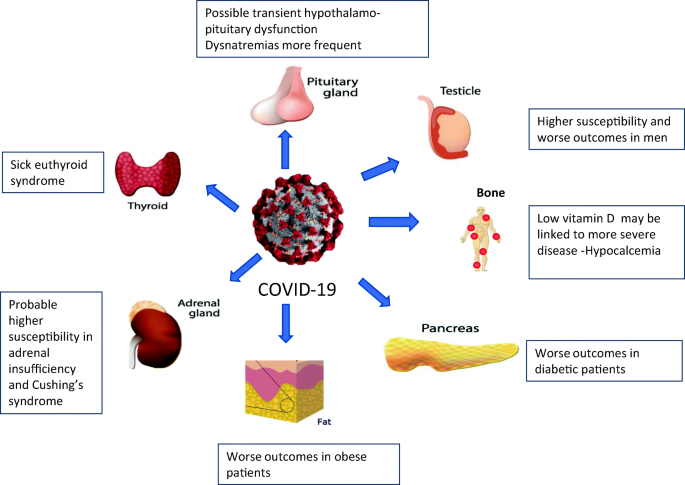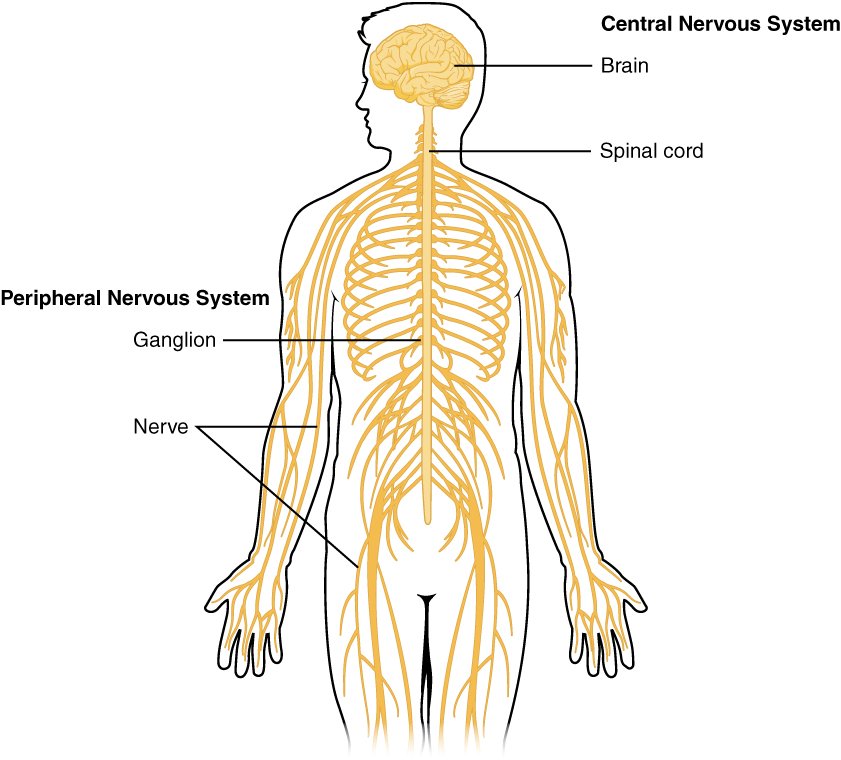
Though moola bandha seems to be concerned with events occurring at the southern pole of the body, it is a means of directly manipulating and influencing the brain and its neurological and endocrinological function at the northern most extremity. In this way, moola bandha influences our behaviour, personality and mental state by exerting a positive and coordinating effect on the whole physical body via the brain.
Moola bandha helps to integrate the neurological and endocrinological function of the body by manipulation of body energies.
Neurone cells are the basic units of the nervous system. Their function is to conduct energy impulses which transmit information. Varying in size and shape, there are more than twelve billion neurones in the body that go to make up the nervous system and play an important role in the shaping of consciousness, distributing the energies of the body. In this way the different body organs are controlled; turned on or off, sped up or slowed down, given fine tuning and coordinated. The nervous system is coordinated with the endocrine system by way of a central mid brain structure, the limbic system. Within this lies the hypothalamus which controls the autonomic component of the nervous system as well as the endocrine glands. The nervous system allows for fine, precise, immediate control of the body with very little delay.
The endocrine system, on the other hand, is a slower controlling mechanism, regulating the metabolism and basic structure and function. In the normal individual both these systems are coordinated and harmonized within themselves and with each other so that all bodily processes function at an optimal level, no system trying to outdo any other. Each cell in the body works to maintain the health and integrity of every other cell, organ and structure.
- The nervous system The nervous system is divided into the following components:
Central nervous system:

This is an organization of two principal components, the spinal cord and the brain. The spinal cord serves as a conduction path to and from the brain which regulates the complex activities of the body and mind. It is a highly developed computer which integrates whole body function in terms of sensation, movement, thought, feeling, intellectual faculties, and higher intuitive processes.
Peripheral nervous system:

This is comprised of those neurones which lie outside the bony case formed by the skull and spine, and includes autonomic and sensory/ motor nervous systems. Motor nerves take messages from the brain to the different parts of the body and sensory nerves bring messages back.
• Autonomic nervous system:

This regulates all automatic body functions including heart rate, blood pressure, endocrine and digestive processes, and so on. Although not normally under our conscious control, they can become so through the techniques of biofeedback and yoga. The sympathetic aspect of the autonomic nervous system generally comes into play when we experience stress, tension or strong emotions. The system tends to be active when we are calm and relaxed.
With the practice of moola bandha we see an elaborate interplay of the different aspects of the nervous system. The initial impetus to perform moola bandha stimulates the bcerebral cortex of the central nervous system. The message to contract the perineum is relayed to the second, third and fourth sacral (peripheral) nerves through the spine. Having accepted the nervous stimulus, the sacral nerves proceed to contract the perineum (peripheral nervous system). The contraction completed, the effects on the autonomic nervous system may now come into play.
Parasympathetic fibres concerned with relaxation emerge only from the neck (cervical) and sacral (pelvic) areas of the spinal cord. Thus, with the stimulation of the sacral nerves not only has the perineum successfully been contracted but also the parasympathetic nervous system is now dominant over the sympathetic nervous system, resulting in a deep sense of rest and relaxation in body and mind. The autonomic nervous system maintains constant tone and monitors any change in the body’s internal environment. With the performance of moola bandha the whole internal environ ment is altered, the blood pressure decreases, as do the respiration and heart rate, and so on.
The sensations of relaxation and pleasure generated by this practice are relayed back to the brain (via the peripheral nervous system) where they are analyzed by the higher mental faculties of the cerebral cortex, and transmitted to the mind for conscious appreciation and enjoyment.
A similar neurological process occurs in the practices of ashwini and vajroli mudras, the difference being that the initial mental impulse responsible for the contraction of the various muscles is generated from a different area of the brain’s cortex, or outer layer. The nature of nervous control over these muscles basically remains the same.
It is important to realize that there is a difference between the unconscious, involuntary processes involved in urination and defecation, and conscious contraction as experienced in yogic practice. In the first case, the neuronal circuits related to the perineal area are usually outside the normal range of conscious awareness. Through moola bandha we can learn to use those same neuronal circuits as part of an act of will, within the range of conscious awareness, thereby enabling us to:
• Precisely control all physical activity in this area, projecting our control into deeper pranic or psychic areas. Be consciously aware of the processes of the perineal area and arrest any disharmony before disease manifests e.g.
piles, constipation, prostatic hypertrophy.

Retrain the brain to disentangle confused or crossed circuits so that the sensory motor system is coordinated, and health of the whole body maintained. Have greater conscious control.
These effects have ramifications for all the other components of the body.
The nerve which supplies the perineum is the pudendal nerve. It derives its fibres from the second, third and fourth sacral nerves, which in turn originate from the sacral plexus in the lower back. This nerve sends branches to the vagina, clitoris, penis, scrotum, rectum, anus and perineal muscles and is both sensory and motor in function. The interaction of the nerves in the perineum with the brain and the rest of the body is extremely intricate.
The nervous system is delicate and sophisticated, but our precise control over this instrument is often left wanting. Yet despite all its networks, myriads of pathways and connections, it is possible to unravel its mysteries and regain conscious control of the total organism. The technique of moola bandha is a way to that goal and the catch-word is ‘practice’.
Damage to either nerves, spinal cord or brain may seriously impede, or render impossible, control over muscles in the body. In cases where people have had no voluntary control over the muscles of the pelvic floor, it was impossible for them to contract any of the muscles or muscle groups of the perineum.
Closer investigation revealed that in most cases some damage had been incurred by the nervous system. Similarly, the opposite phenomenon has also occurred. Namely, after the contraction of specified muscles the practitioner has failed to be able to let them go and relax.
The brain fires off a train of continuous impulses which send the muscles into spasm, leading to unpleasant subjective physical and mental sensations.
From our experience this is caused by a psycho-physical inability to properly control the contraction and release of muscles, coupled with an excessive discharge of pranic energy which the body has not yet been accustomed to handle. As a result the circuits overload. These phenomena require expert assistance and guidance.
Though such experiences are rare, the implications for the students are obvious. Any break in the complex links between the muscles and the brain will have definite repercussions on the total system. Thus, sound health is a vital requisite for the practice of moola bandha. The preparatory techniques must also be fully mastered. Moola bandha must not be overpractised in the beginning and the guidance of an expert teacher must always be on hand.
The endocrine system

The endocrine system is a body control system which is comprised of glands secreting powerful hormones into the blood stream. The endocrine glands are not only responsible for metabolic processes and the control of all biological activity in the body, but also hormonal balance profoundly affects our personality and character.
There are eight endocrine glands in the body: pituitary, pineal, thyroid, parathyroid, thymus, adrenals, pancreas and gonads. The endocrine system is self-regulating in that hormone secretions from any gland is activated in part by other hormones in the bloodstream. All information feeds back to the master controlling gland, the pituitary. Thus, the endocrine glands are all interrelated, interlinked and interdependent.
One diseased or malfunctioning endocrine gland will impair the efficient functioning of the others and will, at the same time, have direct or indirect bearing on the total wellbeing of the body, through its effect on the brain. On a more subtle level, each of the endocrine glands is brelated to one of the chakras. There is, however, no endocrine gland specifically related to mooladhara chakra, though according to yogic philosophy, the perineal body is the vestige of a gland which has atrophied in the course of evolution. The practice of moola bandha reactivates this vestige, which has very subtle effects on the brain and the pituitary/pineal/hypothalamic complex. At the same time it stimulates the gonads in both sexes, as it is intimately related to this system. This stimulation turns on the energy in the whole pelvic area, making it available for other body processes. In yogic terminology, the energy is called ojas and can be channelled by various techniques such as vajroli mudra, for productive and useful work in the body and mind. Moola bandha may lead to increased sexual energy; it should not, however, lead to ejaculation. The practice of vajroli mudra is therefore learned after moola bandha to prevent this dissipation of sexual (pranic) energy and encourages its sublimation for a higher purpose – the reanimation of the latent capacities in the brain.
Thus, moola bandha allows us to gain control over the endocrine system as well as energizing body and mind. This is because endocrine glands (at the physical level) correspond to the chakras, whirling vortices of energy (at the pranic level). Moola bandha stimulates mooladhara and swadhisth ana chakras, sending energy through the body, invigorating us and making our personality positive and dynamic.
The neuro-endocrine axis With the energy gained through control of the endocrine glands, we can act with determination and spontaneous creativity. Through moola bandha, combined with other yogic disciplines, we learn to channel the nervous energy at will so that we can act in a more graceful, flowing way, able to perform more difficult tasks with greater dexterity. When the brain becomes ordered and more synchronized, we function better at all levels with increased understanding and willpower, and are able to accomplish more in our life with attendant satisfaction and gain.

Give a Reply